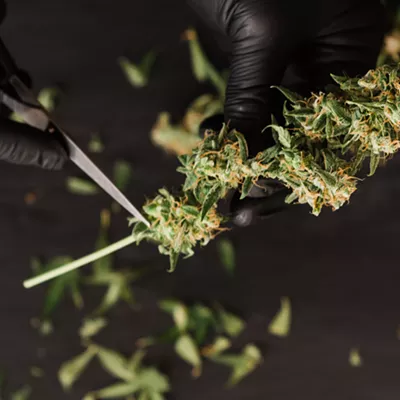Researchers affiliated with the University of Virginia reviewed data from 14 randomized clinical trials involving over 600 patients. Ten of the trials assessed the use of either botanical cannabis or Sativex, an oromucosal spray consisting of plant-derived cannabinoids.
“Of the included studies, 79% showed improvement in neuropathic pain following treatment with a cannabinoid,” investigators reported. “Improvements in secondary outcomes such as sleep quality, anxiety, sensory testing and quality of life were also noted in several studies, consistent with prior literature. Most reported side effects were mild and well-tolerated.”
The study’s authors concluded, “Overall, the data demonstrate that cannabis-based medicines are a potentially effective emerging drug class in the treatment of peripheral neuropathy via reducing neuropathic pain and related symptoms.”
Data published in 2023 in the Journal of the American Medical Association reported that nearly one in three patients with chronic pain use cannabis as an analgesic agent and many of those who do substitute it in place of opioids.
Full text of the study, “The use of cannabinoids in the treatment of peripheral neuropathy and neuropathic pain: A systematic review,” appears in The Journal of Hand Surgery. Additional information on cannabis and pain management is available from NORML’s publication, Clinical Applications for Cannabis & Cannabinoids.
Feds: Oral fluid testing still not an option for commercial drivers despite rule change
Commercially licensed drivers will continue to be subject to observed urine tests for the foreseeable future, despite the U.S. Department of Transportation amending its rules nearly 20 months ago to provide workers with the option of undergoing less invasive oral fluid testing as an alternative to urinalysis.
Federal officials finalized the rule change on May 2, 2023, and the new rule became effective on June 1, 2023. However, the rule stipulates that commercial drivers cannot opt for oral fluid testing until the U.S. Department of Health and Human Services certifies at least two laboratories to perform saliva screening.
In a recent notice published in the Federal Register, the agency acknowledged that no labs have received HHS certification.
“Because no oral fluid laboratories have been certified, it is not yet possible to comply with this provision,” the agency wrote on Dec. 9. As a result, the agency is seeking to amend its May 2023 rule “to require the conduct of directly observed urine tests in situations where oral fluid tests are currently required, but oral fluid testing is not yet available.”
Responding to an inquiry from California NORML’s Deputy Director Ellen Komp, a SAMHSA representative acknowledged: “At present, 11 laboratories have formally expressed their intent to seek HHS certification for the administration of oral fluid testing protocols, however at this time, no laboratories have submitted applications. The certification process generally takes three to six months from the time of application.”
The representative added: “HHS understands the urgency to certify at least two HHS Certified oral fluid testing laboratories and remains committed to expediting the certification process for the oral fluid testing laboratories, and since the DOT published the final rule on May 2, 2023. … At this time, it is difficult to anticipate the certification of the first HHS certified oral fluid laboratories. HHS remains resolute in our commitment to ensuring the highest standards of test accuracy within the regulated drug testing sectors and reliability for the benefit of all stakeholders involved.”
Federal transportation laws currently mandate that commercially licensed drivers randomly undergo marijuana urinalysis testing, which detects the presence of the inert carboxy-THC metabolite. The non-psychoactive metabolite is detectable in subjects’ urine for weeks or even months following past exposure.
Oral fluid tests typically identify THC or its primary metabolite for a period of 12 to 24 hours following marijuana exposure, a period of time beyond the window of cannabis-related impairment, but one that is shorter than the timeline typically associated with urine testing or blood testing.
Since 2020, over 139,000 truckers have tested positive for past cannabis exposure. Those who fail their test are required to enter a “return to work” program, which includes passing a drug test, to have their license reinstated. However, only about one-quarter of those with drug test failures have done so, resulting in an industry-wide labor shortage.
When the DOT finalized the rule change in 2023, Komp said: “While oral swab tests do not necessarily correlate with impairment from cannabis, they are a better predictor of recent use than are urine tests, which can pick up inactive THC metabolites days or weeks after use. This long-awaited move by DOT should help with the country’s supply-chain issues, while advancing employment rights for legal and responsible cannabis users without jeopardizing roadside safety.”
NORML has repeatedly argued that employers should not presume that the detection of either THC or its metabolites is evidence of impairment. That is because their presence is not predictive of diminished performance. Alternatively, NORML has called for the expanded use of performance-based tests, like DRUID or Predictive Safety’s AlertMeter.
Recently, lawmakers in several states — including California and New York — have amended their employment laws so that most state employers may no longer terminate workers solely on the basis of a positive drug test for the presence of THC metabolites.










